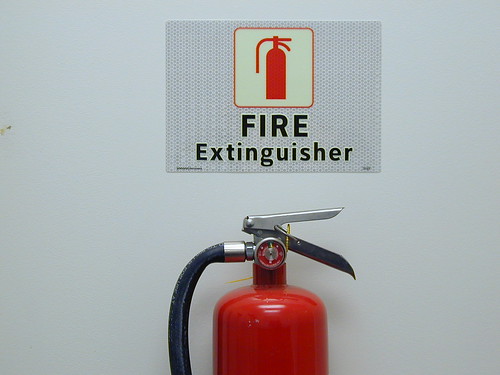Do You Know How A Monthly Fire Extinguisher Inspection Is Carried Out?
by Norman Holden on 09/29/14
Before carrying out a monthly fire extinguisher inspection, it is extremely important to make sure that the property is well equipped with the right fire preventive equipments. These equipments should all be placed in locations where they are easy to access. Apart from the fire extinguishers themselves, there should be smoke detectors that are well distributed throughout the property. All commercial buildings should also be equipped with sprinkler systems. There should also be several well placed smoking receptacles to allow unwanted tobacco products to be safely disposed of.
When is fire prevention equipment most effective?
Fire extinguishing equipped is most effective when it is installed in adequate numbers so as to sufficiently cover the needs of a given property. Someone with enough knowledge in the installed fire prevention equipment should then be assigned the duty of inspecting, maintaining and ordering replacement parts for the equipments. This professional is responsible for completing the inspections in the best of his abilities.
Fire extinguisher monthly inspections
Proper inspection of the installed fire extinguishing equipments is highly recommended so as to assure the safety of all people in the building. This requires that the fire extinguishers and other fire prevention equipments be professionally inspected, tested and tagged on a yearly basis. But since fire prevention equipments are designed to be a quick-response way of defending the property against fire catastrophes, they need to work at a moment’s notice throughout the year. So in addition to the normal annual inspections, monthly checks should also be carried out. Here is how to go about the inspection.
- The first step is to verify that all extinguishers are clearly visible, in their designated locations and unobstructed.
- A physical verification of the extinguisher’s locking pin should then be carried out. Confirm that the pin is unbroken and that the tamper seal unbroken.
- An examination for obvious damages on the container, clogged nozzle, leakage and corrosion should then be performed. If any is found, then the extinguisher or parts in question must be immediately replaced.
- A confirmation of whether the pressure indicator or gauge is still in operable position or range need also to be performed. While at it, the extinguisher needs to be physically lifted to make sure that it is still filled.
- The operating directives on the nametag should then be verified as facing outwards and legible.
- The last servicing date on the nameplate or tag should at this stage be checked out. An expert and fully qualified fire safety equipment maintenance contractor should have inspected the equipment within twelve months.
- After completion of the inspection, a date and name of the inspector must be put down at the back of the containers or on a tag so as to maintain a proper record.
All in all, to prevent fire hazards in buildings, people should not be allowed to develop irresponsible or careless habits, for example, cigarette smoking in places where flammable materials are used or stored. All fire extinguishers in the world not matter how well they are inspected or maintained can not cope or be effective in these kinds of situations. Properly inspected fire prevention equipments work best where people are careful and responsible with their day to day actions.